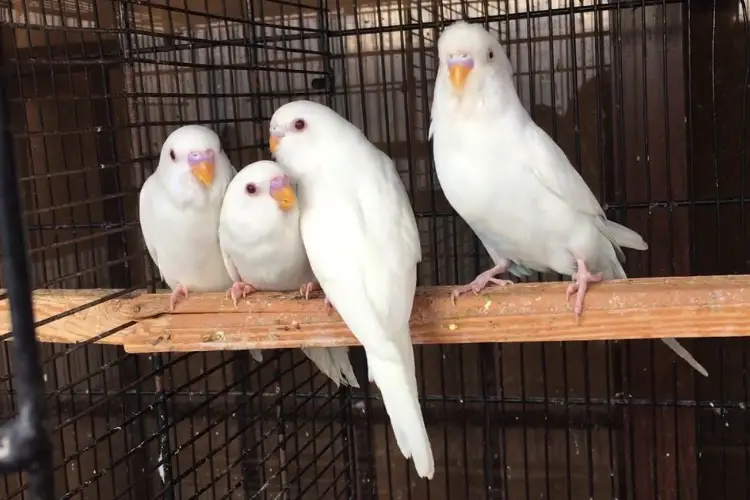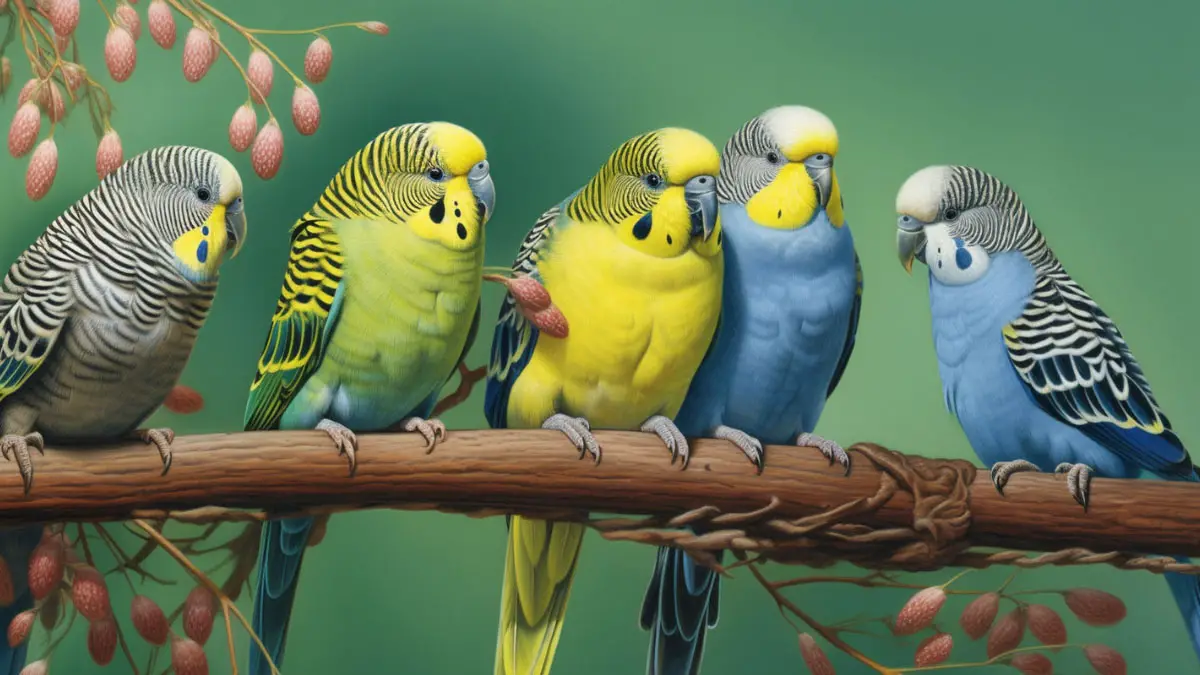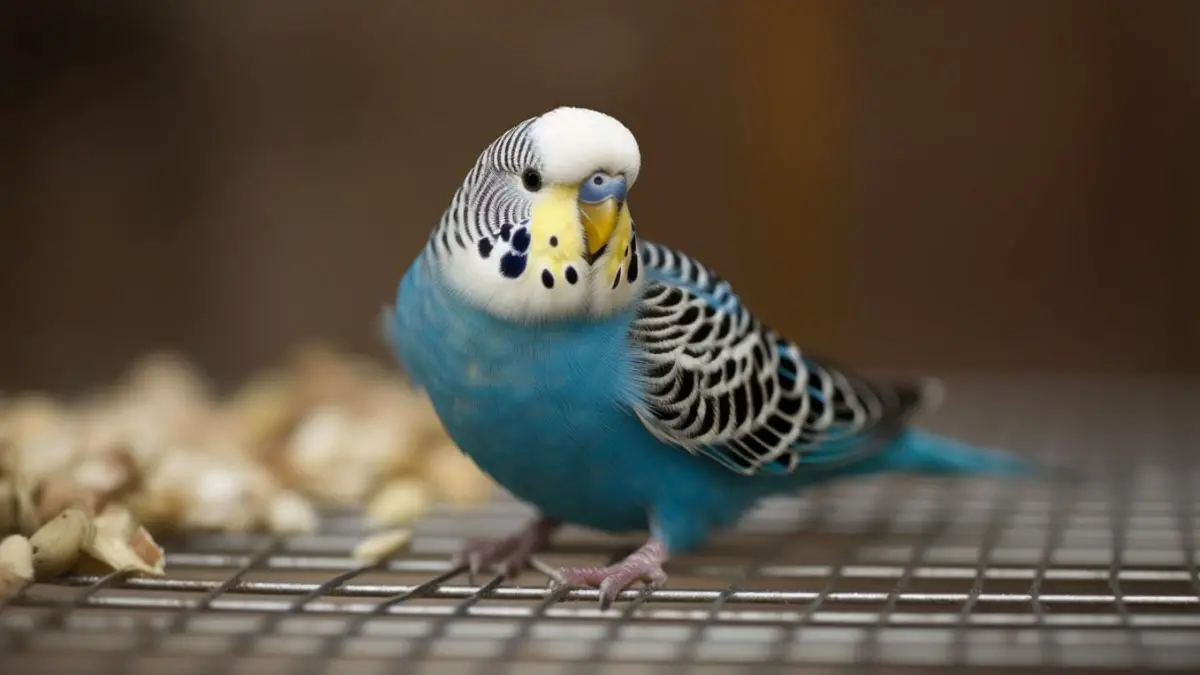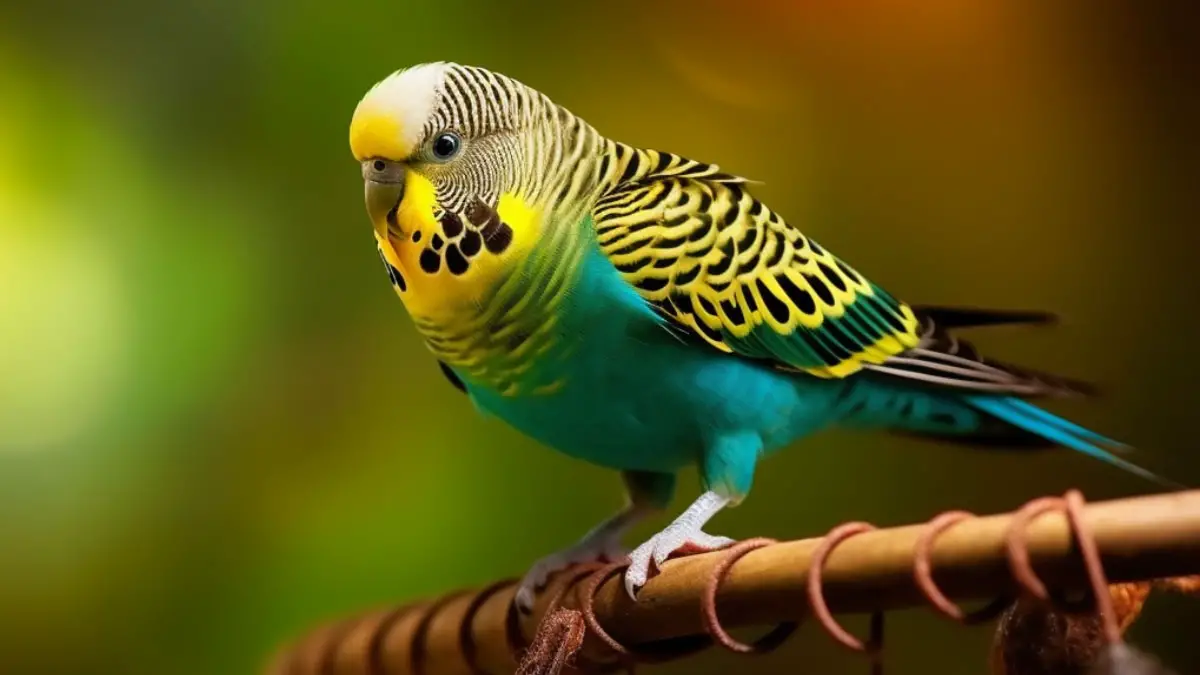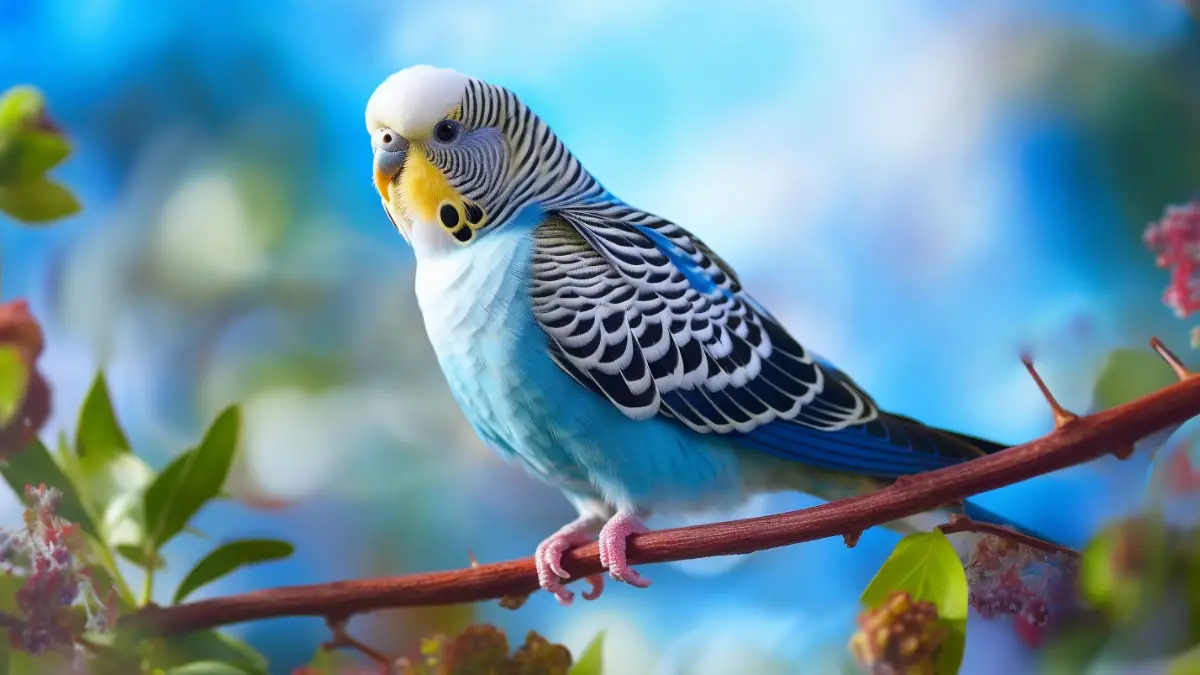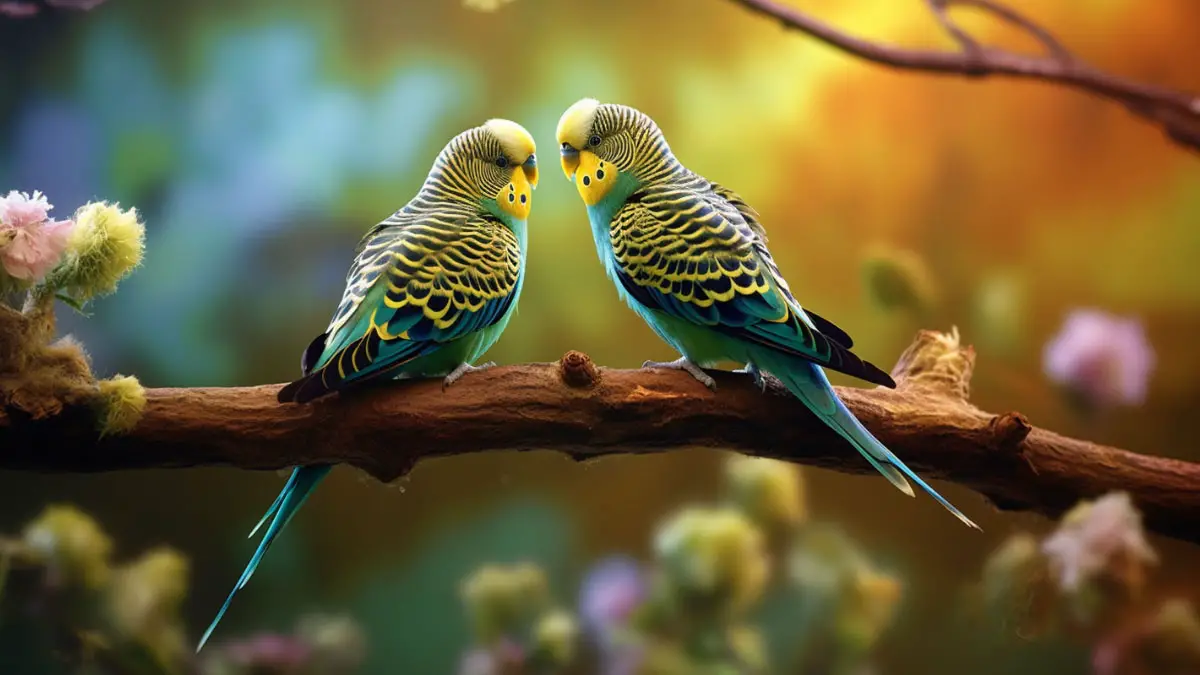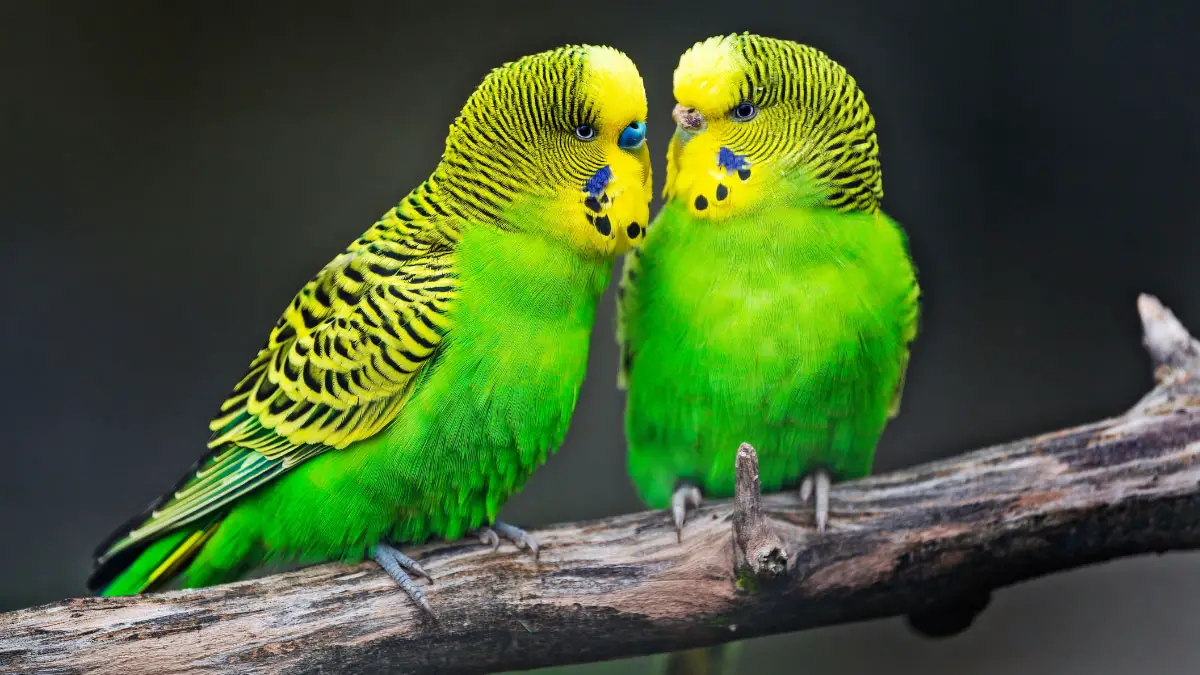Budgerigars are one of the most popular pet birds. They come in various colorful and appealing hues, such as blue and green, white, yellow, and purple. Then, there are the albino budgies that lack any color due to the absence of melanin.
Albino budgies are not very common. They are less than one percent of the total budgie population. The absence of melanin removes the budgie’s color pigmentation, making it all white. The albino parakeets have orange beaks, pink legs, and cere and red eyes. The ino gene is responsible for the inhibition of melanin.
Albino budgies also make great pets like their colored counterparts. However, they have many health concerns. This article will tell you everything you want to know about the albino budgerigar.
What Is An Albino Budgie?
An albino budgie also referred to as a white parakeet, is a budgie that lacks the normal budgie coloration. When we hear albinism, we first think about the color white.
Its one-of-a-kind look is due to the Ino mutation, which causes the elimination of melanin from the skin, resulting in an all-white bird with no color. The parakeet has a white plumage with pink legs and cere. Its eyes can be either red or pink, and they have an orange nose. Parakeet color genetics are of two types; the green series and the blue series parakeets.
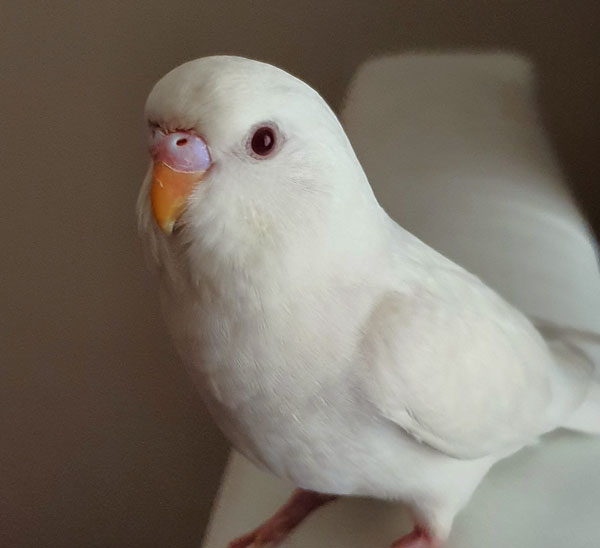
The green series budgies have feathers with either yellow or blue colorings. Their bodies’ base color is yellow. So when the yellow and blue combine, the budgie has more of a green outlook. The blue series budgies have a blue body base and feathers with a white head.
The ino gene mutation eliminates the colorings on the green series budgies, leaving them with a yellow outlook, and the blue series become albino parakeets. The yellow budgie is called a Lutino budgie. Both the lutino and albino parakeets are known as Inos.
Are Albino Budgies Rare?
Albino budgerigars are very rare. They make up less than one percent of the parakeet population. White parakeets are a sight to behold, but unfortunately, they cannot be in large numbers. Why? Due to their albinism, the white parakeet is susceptible to many health problems, unlike the usual budgie.
Without adequate care, a white budgerigar cannot survive for long. So, if you own an albino budgie, you must dedicate a lot of effort to ensure it is healthy. The imo gene can be passed from parent to child. You will find that a budgie family with typical cases of albinism is likely to have chicks with the same mutation.
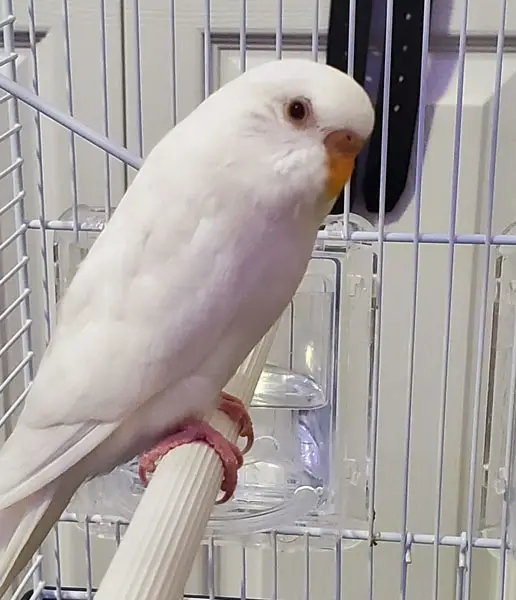
Some budgie breeders have encouraged breeding more white budgies due to their unique color. However, albinism is a health condition and not something you should take for granted. In addition, an albino budgie requires a dedicated owner to live healthily.
Are Albino Parakeets Healthy?
Unfortunately, no, albino parakeets have various health issues. They are also smaller than the normal budgie; however, with enough care and attention, the albino budgie can lead an everyday life with no health problems and even live for a long.
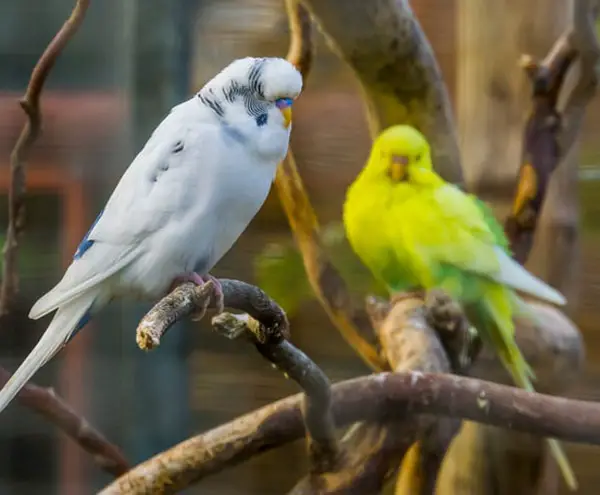
The common albino budgie health problems include;
- Vision problems and, in extreme cases, blindness
- Limpness
- Hearing impairment
- Cancers
- Allergies
- Ragged feathers
- Kidney issues
- Thyroids
In addition to other health concerns, albinos have a weakened immune system, which you must remember when caring for your pet. Always give the white parakeet a well-balanced diet and regular vet checkups to ensure your budgie’s best health.
Are Albino Budgies Female or Male?
Both females and males can have albinism. However, female albinos are more than male albinos. Why? Because males are homogametic and females are heterogametes. Unlike mammals, who have an X chromosome, a male budgie possesses two ZZ chromosomes, while a female has ZW chromosomes. In birds, the female determines the gender of the hatchling, unlike in mammals.
The chromosomes hold genes or traits passed along via the Z chromosomes. Therefore heterogametes become more susceptible to recessive gene mutation because they only have one Z chromosome. This is referred to as sex linkage.
A mutation is a genetic mishap in which one or more genes are altered. The original gene is referred to as the Wild-Type gene. Any deviation from the Wild Type is referred to as a mutation. A mutant may differ from the Wild Type in substantial or minor ways.
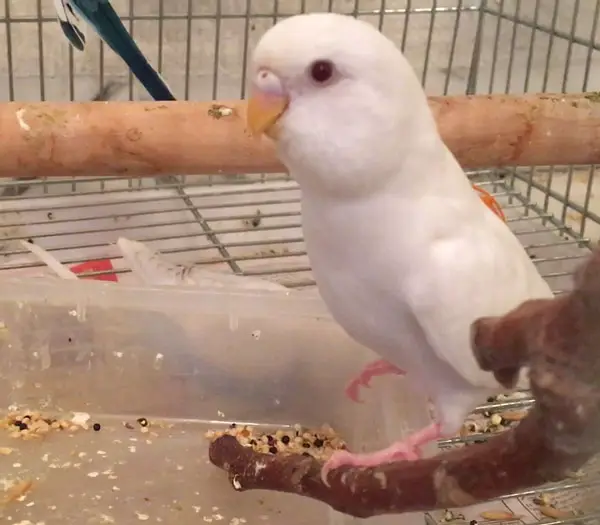
During mating, the male budgie’s sperm fertilizes the hen’s ovum to generate the egg. Sperm and ovum are solitary cells containing a single copy of each chromosome pair (half of a chromosome pair gets included in the sperm or ovum is a matter of chance).
Consequently, the fertilized egg contains a complete complement of chromosomes, with each chromosomal pair including a chromosome from each parent. Thus, each parent’s genes contribute to every trait of the chick.
This process has a hereditary problem known as crossing-over. This occurs during the sperm and egg development phase, where the chromosomes couple together and lie parallel. A pair of chromosomes can become entangled at this stage, much like two long balloons that have been twisted together.
The segments between these spots can then be exchanged. Thus, a sperm or an egg chromosome can be a combination of the parent’s chromosome pair. Crossing over for a given set of chromosomes tends to occur at the same sites. This implies that genes on the same segment will always be connected or linked.
The ino gene is sex-linked and is a recessive mutation. So, for a male budgie to become an albino, it must have two ino genes on its Z chromosomes. That is why there are more female albino budgies because sex-linked mutations are easily expressed in females with only one Z chromosome.
Males with a single afflicted Z chromosome are quiet carriers of the recessive trait or affected individuals of a dominant trait. Mostly in male budgies, albinism is concealed by another color. Such types of male budgies are called split albino budgies or color-hiding individuals.
Split albino budgies do not exhibit albino traits but can pass on the ino gene to future generations. So how do you differentiate a male from a female albino budgie?
It is not easy to differentiate them because both exhibit the same type of coloration. The only way to determine the sex is by waiting for the breeding season. The male albino budgies have a somewhat deeper colored cere than regular cere colors, which are pink or purple.
During mating seasons, female albino budgies have a bronze cere with a rough texture as opposed to their regular cere hues, which are light blue or white. You can also check which budgie lays eggs or have the vet conduct a DNA test for you.
How To Tell The Age Of An Albino Budgie
The easiest time to tell the age of an albino budgie is when it is still young. As a juvenile, a white budgie starts changing the texture and color of its cere.
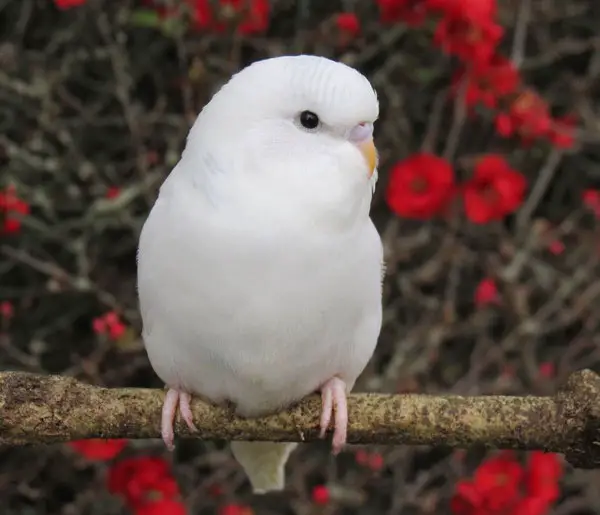
A male juvenile albino parakeet begins to develop a deeper colored cere- a deeper blue or a deeper pink-this indicates that the bird is approximately six months old. The bird is older than six months if a female infant albino budgerigar’s cere becomes bronze or brown with a rough texture.
How Much Does An Albino Parakeet Cost?
An albino budgie for sale costs $150 to $300, while a normal budgie can only cost $30. This is due to the rarity of the red-eyed albino budgie. Possessing a white parakeet as a pet requires a large budget. Prices may vary based on where you purchase them from.
Albino Budgie Lifespan
Albino budgies can live between five to fifteen years in captivity. However, they can only go up to six years in the wild. To ensure a long lifespan, you should ensure the budgie is well cared for regarding food, the environment, and regular checkups with the vet.
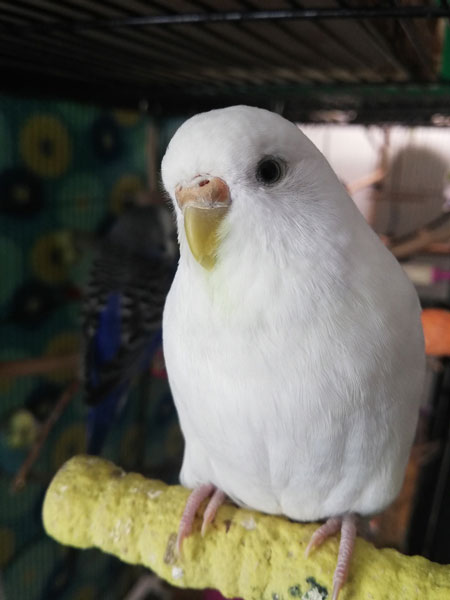
How To Care For An Albino Budgerigar
There is no difference between how to care for a normal budgie and a white parakeet. However, white parakeets need more attention and a very keen owner because they have weaker immune systems than regular budgies. Here’s how to care for an albino budgie.
The primary thing to consider is diet. You should not feed the white parakeet a diet with seeds only. Seeds have high-fat content, which can make the budgie obese. Obesity leads to health issues such as diabetes. Provide the white parakeet with a well-formulated pellet diet. Also, ensure you give the budgie fruits and vegetables to make the diet well-balanced.
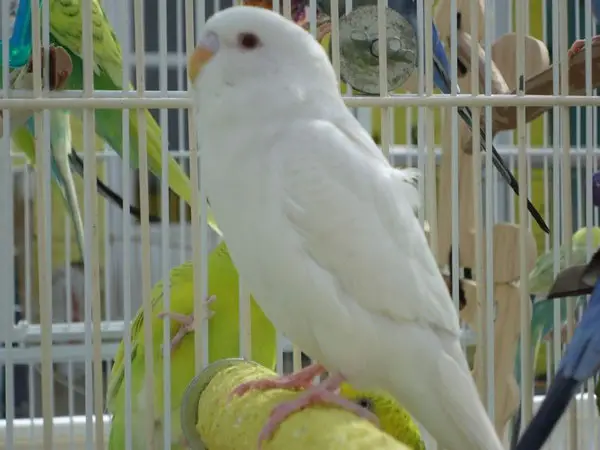
For water, try investing in bottled water because, at times, tap water contains chlorine which is toxic to your albino budgie. Other care tips include;
- Spend quality time with your albino budgie. Socialization is an essential element of your budgie’s life.
- Ensure that the budgie has constant access to food and water. Refill the food bowl daily. You should change the water every three days.
- Place the budgie’s cage in a quiet room, particularly at night. Your cockatiel will be able to sleep better at night this way. Turn off the lights at night, so the cockatiel has 12 hours of darkness, as recommended by avian vets.
- Ensure that the parakeet’s cage is not placed in direct sunlight. Remember that budgies are tropical birds, so they cannot endure extremely hot or cold weather very well.
- Purchase a large cage that can accommodate a hanging gym or swing set. These objects will help the white budgie during exercise time. Also, large cages ensure the budgie has plenty of space to fly. Small cages can make the budgie become stressed.
- Ensure you clean the cage and remove leftover foods to eliminate pests or bacteria. Also, you can trim your budgie’s beak and claws.
- Ensure you take the albino budgie to a vet regularly for check-ups.
- Give female albino budgies cuttlebone to enhance their diet with calcium, especially during the breeding season. The additional calcium boosts their hormone levels and helps the white female parakeet during the egg-laying process.
- Keep your albino budgie cognitively stimulated by including toys and puzzles in its cage. To keep the cockatiel interested, rotate the toys once a week. You also incorporate water baths for the budgie to bathe in.
- Albino budgies
- Remove any stress or terror triggers near the albino budgie. Keep the cage in a peaceful setting away from other pets. You can also cover the budgie’s cage at night to help them sleep better without interruptions.
How Do You Breed Albino Budgies?
Because of their stunning white coloring, albino budgerigars have piqued the interest of budgie breeders. To create an albino budgie, you must first have a budgie with ino genes. Note that two albino budgies do not always produce white chicks.
Albinism is a recessive gene mutation, which implies that it is easily overridden by the standard color seen in common parakeet genetics. Breeders need a budgie with ino genes to create an albino budgie. Because the ino gene is sex-linked and recessive, breeders select the budgies to employ to produce purely-white parakeets.
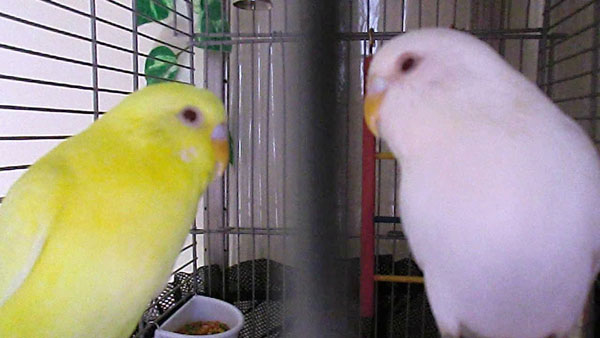
A male infant budgie must have two ino genes from both parents to become an albino budgerigar. A female newborn budgie must inherit one ino gene from her parents to become an albino budgerigar. Due to the various parent pairings, breeders have multiple alternatives when seeking to breed albino budgies.
FAQs
Here are other questions on Albino budgies.
In severe cases, albino budgies can go blind. However, ordinarily, albino budgies are not blind but have vision problems due to the lack of pigmentation.
The main difference between the two is that the lutino is yellow while the albino budgie is white. All other aspects, such as having red eyes, pink legs, and an orange beak, are similar in both budgies.
Conclusion
Albino budgies are white parakeets with no coloration on their bodies. The ino gene is responsible for eliminating melanin from the albino budgies. Apart from the white parakeets, there is also the lutino budgie which also has the ino gene.
An albino budgie is more susceptible to diseases than normal budgies. Any sex can be an albino if the imo gene is linked to their chromosomes. All the best with your white parakeet!
